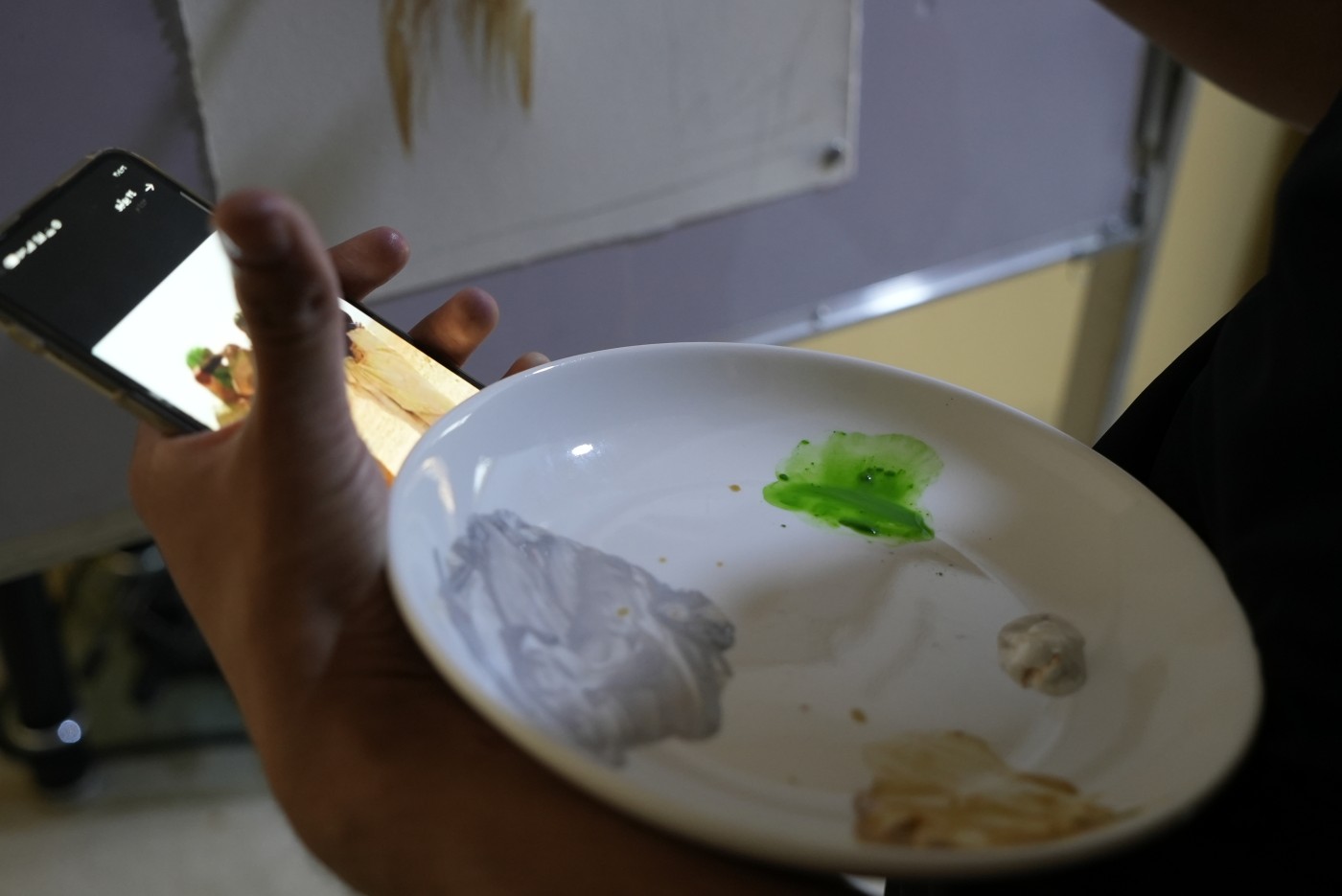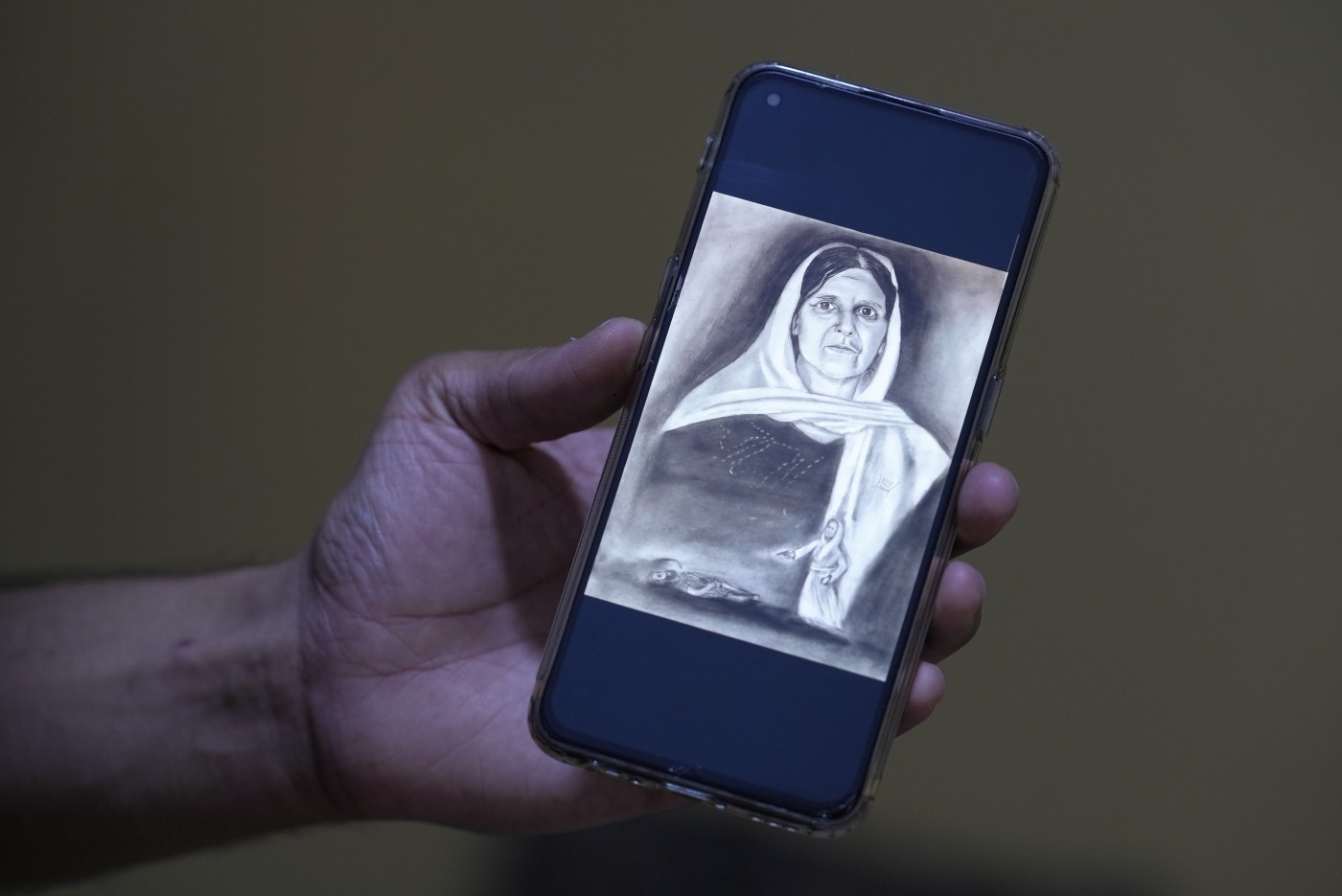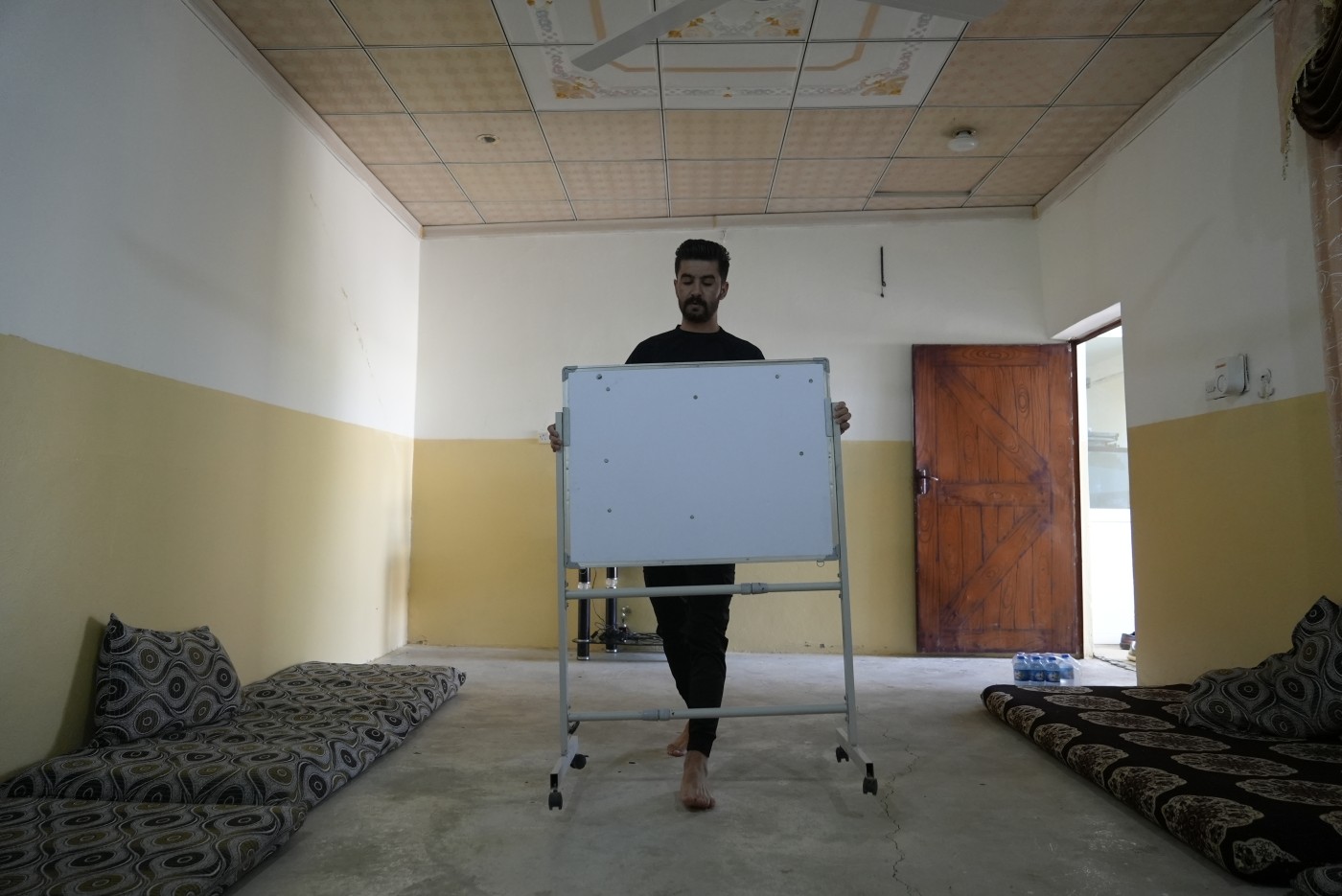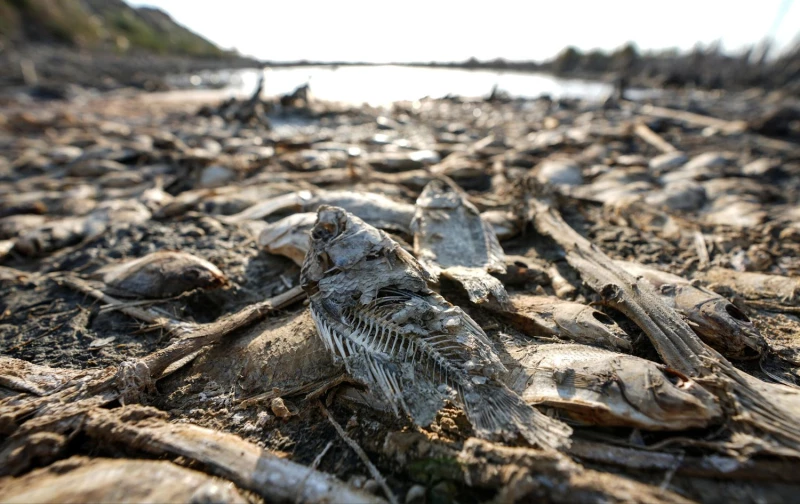The 28-year-old Hisham Haji Badal uses his brush to document the Yazidis' plight and his own forced journey. His brushstrokes became a powerful resistance, transforming suffering into a poignant testament to resilience.
Art as a Weapon
In the wake of the Islamic State's brutal persecution of the Yazidi people, art emerged as a powerful weapon. For Badal, his brush became a voice for the voiceless people.
The New Region visited Badal in his home in the Duhok village of Khanke, he welcomed us at his guest room, which he has converted into an art studio. He served us a cup of steaming tea, a sign of warm Iraqi hospitality, minutes before he settled in for the interview.
“Following freeing my city, art was all I knew and it was the only weapon I had. In 2018, I picked up my brush and colors to capture the essence of Yazidi genocide, the horrors we faced, the captivity, the abductions, murders and arming kids,” Badal told The New Region.
“My art serves as a stark reminder of the atrocities committed against the Yazidi people, a chronicle for those who remain unaware of our plight, it is also to amplify the voices of the silenced, and to ensure that the Yazidi genocide is never forgotten,” he added.  In his converted art studio, with a brush in hand, Badal prepares to confront the pain of the past through his colors. Photo: Azhar Al-Rubaie.
In his converted art studio, with a brush in hand, Badal prepares to confront the pain of the past through his colors. Photo: Azhar Al-Rubaie.
Voice for the voiceless
With every stroke of Badal’s brush, he gave voice to the voiceless, refusing to let their suffering be silenced.
Badal showcased to The New Region a multitude of his paintings. However, he was particularly eager to draw our attention to a piece depicting the plight of Kojo, a Yazidi town ravaged by one of ISIS’s massacres.
“My aim was to depict the tragedy that unfolded in Kojo town. In August 2014, ISIS laid siege to the town for 15 days, trapping Yazidis inside the school and committing horrific crimes against them,” pointing to the painting, he said.
Badal explained the painting and said that “at the heart of the painting stands an elderly woman. Her face, etched with sorrow and despair, reflects the collective anguish of the Yazidi people." Badal stands with his painting. In the right side, an elderly woman echoes the collective suffering endured by the Yazidi people during the ISIS massacre in Kojo. Photo: Azhar Al-Rubaie.
Badal stands with his painting. In the right side, an elderly woman echoes the collective suffering endured by the Yazidi people during the ISIS massacre in Kojo. Photo: Azhar Al-Rubaie.
“Tears, like silent screams, echo their pain. Yet, she embodies the resilience of a community that has endured unimaginable suffering. Refusing to surrender to despair, she stands tall. The dome, a prominent architectural feature of Yazidi shrines, stands beside her, a powerful symbol of their faith and cultural heritage that continues to endure.”
Badal's role as an eyewitness to the tragedy added a profound dimension to his art.
For Badal, art is not merely a form of expression; but it is also a tool for activism. His paintings serve as a stark reminder of the atrocities committed against the Yazidis, challenging the world to confront the reality of their plight. He uses his art to demand justice for his people, calling for an end to the persecution and discrimination they have endured for centuries.
Who are Yazidis?
The Yazidis, a small, indigenous minority of Mesopotamia, are united by their unique ethnicity and ancient monotheistic religion, Yazidism. Sharing elements with other Middle Eastern traditions, Yazidism sets itself apart with distinct prayer rituals, a belief in reincarnation, and the veneration of the Peacock Angel, Tawusi Malek, as a divine messenger. However, these very tenets have fueled centuries of persecution against the Yazidis.
Their history bears witness to repeated genocides, the most recent perpetrated by ISIS. Seeking refuge from this constant threat, many Yazidis have settled in Sinjar, Iraq, where the mountainous terrain offers some protection.
Despite their struggles, the Yazidi community persists in preserving their culture and faith. The Yazidi people have endured a horrific history of persecution, documented in 73 instances of genocide throughout the centuries, with the most recent atrocity committed by ISIS.
Throughout history, the Yazidis have faced persecution due to their unique beliefs and the misconceptions about their religion. They were targeted by ISIS, who viewed them as heretics. This resulted in horrific genocides, displacing hundreds of thousands and leaving many traumatized.
From mountains to reunions
In November 2022, the artist Badal packed his belongings and began a challenging journey from Iraq towards Europe. His final destination was France, where his wife resided.
He braved the huge mountains and harsh weather before reaching Greece in December same year. There, authorities detained him for a few months, but his Yazidi background helped secure residency and a temporary passport. Finally reaching France in 2023, Badal continues to adapt to his new life, his spirit unbroken.
Approximately 400,000 Yazidis fled to the Kurdistan Region of Iraq and tens of thousands took refuge on Mount Sinjar, where they faced near starvation. The rest, unable to flee, were killed or taken into captivity and subjected to horrific acts of violence – enslavement, forced labor, conscription, torture, and rape.
More than 6,000 women and children were taken captive by ISIS and nearly 2,800 are still missing today. This photo features one of Badal's paintings. The woman depicted likely represents the suffering endured by the Yazidi people. Photo: Azhar Al-Rubaie.
This photo features one of Badal's paintings. The woman depicted likely represents the suffering endured by the Yazidi people. Photo: Azhar Al-Rubaie.
Haunted by war trauma and frustrated by the lack of government support, Badal fled his country seeking a better life for himself in Europe. Medical care for his war injuries, including leg problems and partial hearing loss, was another crucial factor in his decision.
“The constant instability back home left me with no choice,” Badal said, his voice low. “For myself's sake, I had to find a place with the security and medical care I deserve. That's why I came here, to Europe.”
“Coming to Europe does not stop my fight for Yazidi rights. It is a new chapter. As long as art remains my voice, I will continue to demand justice for our people.” he added.


 Facebook
Facebook
 LinkedIn
LinkedIn
 Telegram
Telegram
 X
X



